Dental crowns in Circleville are a fantastic way to restore and protect damaged teeth. But sometimes, after a crown placement procedure, you might notice a bit of excess dental cement around the edges. While a small amount is completely normal, there are some good reasons to remove noticeable amounts of cement.
Here are the key benefits of removing excess dental cement from crowns:
- Maintain good oral hygiene: Excess cement can create small crevices around the crown, trapping plaque and bacteria. This can lead to an increased risk of cavities and gum disease.
- Improved aesthetics: A visible rim of cement around your crown can detract from your smile’s natural appearance. Removing excess cement allows the crown to blend seamlessly with your surrounding teeth.
- Addressing discomfort: In some cases, excess cement can cause irritation or discomfort around the gum tissue. Removing it can alleviate these issues and promote better comfort.
If you’re unsure whether you have excess cement or not, it’s always best to consult your Circleville dentist. They can assess the situation and recommend the best course of action.
Understanding Dental Cement
Dental cement plays a crucial role in the success of a dental crown. It acts like a strong glue, securely bonding the crown to your natural tooth structure. Here’s a closer look at dental cement:
- Types of dental cement: There are two main types of dental cement commonly used:
- Resin cement: This is the most popular type, offering strong adhesion and durability.
- Glass ionomer cement: This type releases fluoride, which can help strengthen the tooth and prevent decay.
- How cement bonds crowns: Dental cement works by creating a microscopic bond between the crown and the tooth. This bond helps to seal the tooth from bacteria and prevent leakage.
- Importance of proper cement removal: Improper removal of excess cement can be detrimental. It can damage the crown or surrounding teeth if done too aggressively. Additionally, leaving excess cement can create the problems mentioned earlier, like trapping plaque or causing discomfort.
Safe DIY Methods for Removing Excess Cement
It’s important to remember that attempting DIY removal of dental cement comes with some inherent risks. Always prioritize consulting your dentist for professional removal, especially for larger amounts of cement, or if you have any concerns. However, if you notice a small amount of excess cement and want to try at-home methods first, here are some options with a focus on gentle techniques:
Flossing:
- Use unwaxed dental floss, as waxed floss can slip and be less effective.
- Gently guide the floss between the crown and your gum tissue using a sawing motion. Avoid snapping the floss, which could irritate the gums.
- Be patient and persistent, but don’t force the floss if it feels stuck.
Soft-bristled toothbrush:
- Use a toothbrush with soft bristles to avoid scratching the crown.
- Gently brush specifically on the edges of the crown where you see the excess cement.
- Don’t use excessive pressure, and avoid scrubbing aggressively.
Warm salt water rinses:
- Mix a teaspoon of table salt in a glass of warm water.
- Swish thoroughly for 30 seconds to help loosen and dissolve minor cement buildup.
- Repeat this process several times a day, especially after meals.
Over-the-counter (OTC) removers (with caution):
- This option should be approached with extreme caution.
- Consult your dentist before using any OTC removers to ensure they are safe for your specific situation.
- If your dentist approves an OTC remover, follow the instructions on the product packaging carefully.
Remember:
- These methods are most effective for minor amounts of excess cement.
- If you experience any discomfort, pain, or difficulty removing the cement, stop immediately and see your dentist.
When to See a Dentist for Cement Removal
While DIY methods might seem appealing for minor cases, there are situations where seeking professional help from your dentist is the best course of action. Here are some key indicators to see a dentist for cement removal:
- Large or stubborn cement buildup: If the excess cement is significant or doesn’t respond to gentle DIY methods, attempting further removal yourself could damage the crown or surrounding teeth. It’s best to leave it to the dentist’s expertise and specialized tools.
- Crown feels loose or uncomfortable: Excess cement can sometimes interfere with the proper fit of the crown. A loose crown is more susceptible to coming out and can cause discomfort. A dentist can assess the situation, remove excess cement if needed, and ensure the crown is securely seated.
- Pain or sensitivity around the crown: Pain or sensitivity around the crown could indicate irritation from excess cement or other potential issues. A dentist can diagnose the cause and recommend the appropriate treatment.
- Difficulty flossing or brushing near the crown: Excess cement can make it difficult to properly floss and brush around the crown, hindering good oral hygiene. A dentist can remove the excess cement and ensure optimal cleaning access.
- Concerns about damaging the crown or surrounding teeth: If you’re at all worried about damaging the crown or your surrounding teeth while attempting DIY removal, it’s always best to err on the side of caution and see your dentist.
Remember, your dentist has the training and experience to safely and effectively remove excess cement. They can also address any underlying concerns you might have about the crown or your oral health.
Final Thoughts
Dental crowns are a valuable tool for restoring and protecting teeth in Circleville. While a small amount of excess cement around the crown is normal, removing noticeable amounts can benefit your oral health and aesthetics.
This guide has explored various aspects of dental cement removal, including safe DIY methods and situations where seeking professional help from your dentist is crucial.
Remember, your nearest dentist in Circleville is your partner in maintaining optimal oral health. They can safely and effectively address any concerns you have about dental cement or your crown. Schedule regular dental checkups to ensure the long-term success of your crown and a healthy, beautiful smile.
Frequently Asked Questions
While some at-home methods can be attempted for minor excess cement, it’s important to prioritize consulting your dentist. DIY removal comes with risks, and a dentist can ensure safe and proper removal.
Absolutely not. Sharp tools can easily damage the crown or surrounding teeth. Stick to soft tools like floss and a soft-bristled toothbrush for gentle cleaning.
Regular dental checkups are crucial for maintaining good oral health. Your dentist can check for excess cement during these examinations and address it if necessary.


